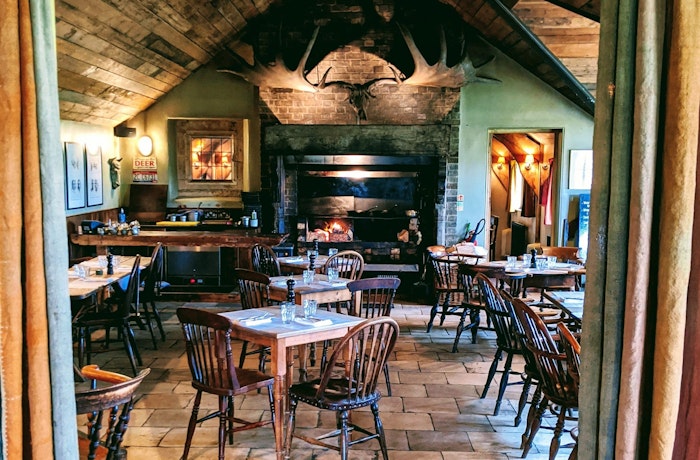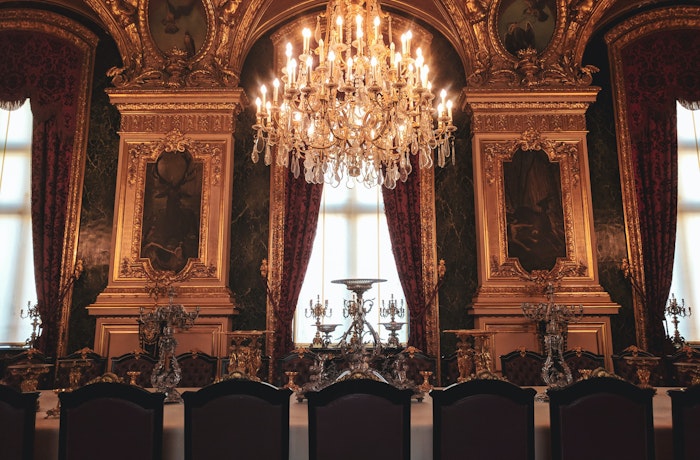
For that was where it all began for the great decorator. A family crisis – namely the walking out of his stepfather while he was studying at Oxford – necessitated that he earn his keep, a feat he managed by buying and selling antiques. Having sold off many of the family heirlooms as a way of facing up to and facing off impending poverty, he knew how to sell; he knew what to look for; and he knew that he was good at it. So good, in fact, was his taste that while still a student he even managed to sell one of his junk shop finds to the Ashmolean.

He determinedly rejected his own role as so elevated thing as a ‘designer’, instead preferring the term decorator for the work he did. It was, he believed, incumbent upon him to bring comfort to a room, something he unfailingly pulled off with sumptuous aplomb, allowing the decorative and eclectic items he so reliably sourced to sing amidst a ‘settled’ environment. A signature of his work was to create a perfectly balanced symphony of texture, colour and pattern, effortlessly mixing time periods without ever jarring an inch.

Clients included Prince Charles, the Duke of Beaumont, Daphne Guinness and Andrew Lloyd Webber. When it came to creating royal interiors, he said, ‘The part that is on view to the public had to be slightly monumental, because it is an official residence, but I also wanted to create an atmosphere where one can carry on an ordinary conversation with the prince without feeling over-awed. It had to be as comfortable for the gardener to sit down and talk to him as for the Queen of Spain to do so.’

As the world of interiors mourns his death, we look back at five especially beautiful rooms he created. As for us, we love this quote, which sums up why he was, in our eyes, the presiding genius amongst decorators: ‘If you only buy from smart antiques shops, your house will look like a smart antiques shop. If you put a great tapestry together with a farmhouse table that has a bowl of cowslips on it, you will probably see the cowslips first. The eye doesn’t know how expensive the tapestry is.’ Farewell to a true talent.
The Importance of Flowers
This heavenly scene in Robert’s own Wiltshire home is classic, eccentric, eclectic and – crucially – alive, that last literally, thanks to the abundant roses that soften the scene. He said, ‘Flowers in a house should look like they grow outside of the house.’ As ever, simple and sage advice.
You Start With The Rug
We love everything about this image. It is a tableau that could, easily, have been too formal to relax in. As it is, thanks to Kime’s touch, it is endlessly inviting. As they note, ‘The balance of a large lamp. And the very interesting story of a tapestry. Noting that this image adheres to a basic Robert Kime Design tenet – that you start with the rug. That it gives grounding and a foundation, from which to build.’
Always Light The Fire
Robert Kime worked in many extremely grand residences, some belonging to royalty. What he never lost sight of was the fact that all most us really want is comfort. His magic lay in creating not showrooms bit those that people actually want to be in – as proven by this view from one side of a pleasingly rustic stud wall into a diminutive room that it would be near-impossible to pass by. It is not grand. It is not palatial. It is irresistibly beautiful.
Don’t Shy From A Chandelier
Many of us hear the words ‘chandelier’ and immediately conjure a shimmering, glittering, cascading creation. Not all chandeliers are so, however, and many iron-work examples are surprisingly understated, yet add interest and balance in high-ceiled rooms that can otherwise feel rattlingly cavernous. This Provencal room is just glorious, speaking of the importance of proportion and the frequent wisdom of going bigger rather than smaller. Kime said, ‘The room was not complete until the 17th-century Venetian picture of the family musicians was hung on the end wall.’
Do Not Be Afraid Of Mizing Patterns In A Room
This London bedroom is the stuff of dreams. It is sumptuous despite the light neutral colour on the walls. It feels like it’s wandered out of a grand country house despite being both urban and fairly compact. Why? The mix of patterns, from the subtly mismatched blue and white lamps to the soft patterned headboard and curtains giving relief to the graphic zig-zag red cushions. As for the hanging scheme – we are in awe. And, as a final lesson, Kime articulates perfectly why lamplight – the more the better – is always the best light.
By Nancy Alsop
August 2022





